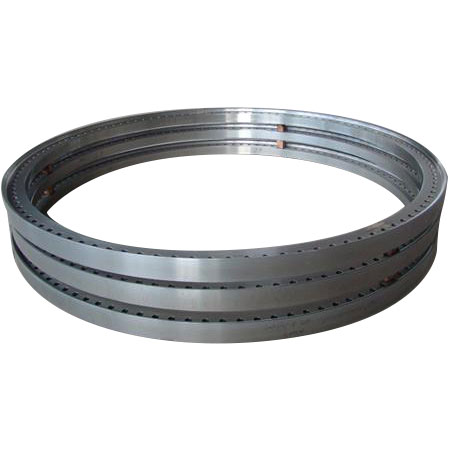Key Benefits of Using Stainless Steel Wind Power Flanges in Wind Power Installations
2024-07-04
As the demand for renewable energy grows, the wind power industry is continually seeking ways to improve the efficiency, durability, and overall performance of wind turbines. One crucial component that plays a significant role in these improvements is the wind power flange. Traditionally, various materials have been used for manufacturing wind power flanges, but stainless steel is increasingly becoming the material of choice. This blog explores the key benefits of using stainless steel wind power flanges over traditional materials in wind power installations.
1. Superior Strength and Durability
Stainless steel offers exceptional strength and durability, making it ideal for wind power flanges. Wind turbines are subjected to immense mechanical stresses from high wind speeds and rotational forces. Stainless steel flanges provide the necessary robustness to withstand these stresses without deforming or failing. This durability ensures a longer lifespan for the wind turbine components, reducing the need for frequent replacements and maintenance.
2. Corrosion Resistance
One of the standout properties of stainless steel is its resistance to corrosion. Traditional materials like mild steel are prone to rust and corrosion, especially in harsh environmental conditions such as coastal or offshore wind farms. Stainless steel flanges, on the other hand, resist corrosion from exposure to moisture, salt, and other corrosive elements. This resistance not only extends the life of the components but also ensures consistent performance and safety.
3. Low Maintenance Requirements
The corrosion resistance and durability of stainless steel flanges translate into lower maintenance requirements. Traditional materials may require regular inspections, coatings, and treatments to prevent corrosion and maintain structural integrity. Stainless steel flanges, however, need less frequent maintenance, reducing downtime and operational costs. This benefit is particularly significant in offshore wind farms where maintenance operations are more challenging and costly.
4. Enhanced Load-Bearing Capacity
Stainless steel flanges have a higher load-bearing capacity compared to many traditional materials. This property is crucial for wind turbine towers and rotor hubs, which must support significant weights and forces. The use of stainless steel ensures that these components can handle the loads efficiently, minimizing the risk of structural failures and enhancing the overall stability of the wind turbine.
5. Excellent Temperature Resistance
Wind turbines operate in a wide range of environmental conditions, including extreme temperatures. Stainless steel flanges maintain their mechanical properties and structural integrity across a broad temperature range. Unlike some traditional materials that may become brittle in cold temperatures or lose strength in high temperatures, stainless steel remains reliable and performs consistently.
6. Improved Safety and Reliability
The strength, corrosion resistance, and durability of stainless steel flanges contribute to the overall safety and reliability of wind power installations. By reducing the risk of component failures and minimizing maintenance needs, stainless steel flanges enhance the operational safety of wind turbines. This reliability is crucial for maintaining continuous power generation and protecting both the equipment and personnel involved in maintenance and operation.
7. Environmental Sustainability
Stainless steel is a sustainable material, with high recyclability and a lower environmental impact compared to some traditional materials. The use of stainless steel flanges aligns with the green principles of wind energy by promoting sustainability throughout the lifecycle of the wind turbine components. Recycling stainless steel reduces waste and conserves resources, contributing to the overall environmental benefits of wind power.
8. Cost-Effectiveness Over Time
While stainless steel flanges may have a higher initial cost compared to some traditional materials, their long-term benefits make them cost-effective. The reduced maintenance requirements, longer lifespan, and enhanced performance of stainless steel flanges lead to lower overall operational costs. Additionally, the durability and reliability of stainless steel help avoid costly downtime and repairs, providing significant financial advantages over time.
Conclusion
Stainless steel wind power flanges offer numerous benefits over traditional materials, making them an ideal choice for modern wind power installations. Their superior strength, corrosion resistance, low maintenance requirements, and enhanced load-bearing capacity ensure the durability and reliability of wind turbines. Additionally, the environmental sustainability and long-term cost-effectiveness of stainless steel align with the goals of the renewable energy sector. As the wind power industry continues to advance, the adoption of stainless steel flanges will play a crucial role in enhancing the efficiency and performance of wind turbines.



